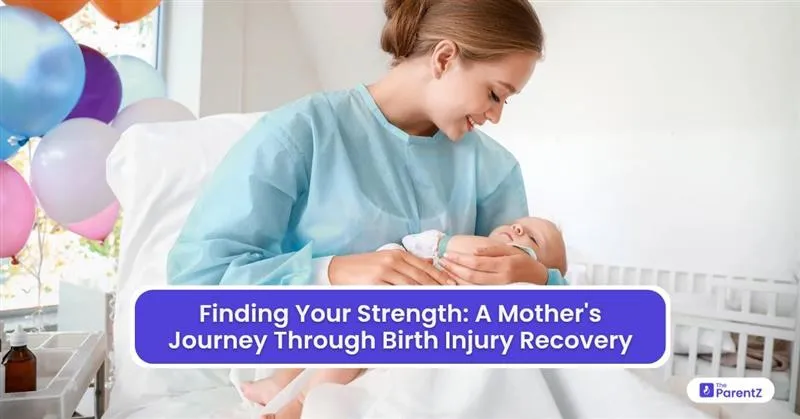When 31-year-old Meera delivered her first baby, she expected pain. But as days turned into weeks, she realized something was terribly wrong; she couldn’t walk without agony, her bladder control vanished, and stitches wouldn’t heal. “Why didn’t anyone tell me birth injuries could be this bad?” she wondered. Meera’s experience is not rare. Around 85% of women sustain some form of perineal trauma during vaginal birth, according to the American Journal of Obstetrics & Gynecology. Yet birth injuries often go undiscussed, leaving mothers feeling alone in their pain.
Understanding Birth Injuries: More Than a Tear
Birth injuries encompass damage to pelvic tissues, nerves, muscles, or bones sustained during delivery. The most common injuries include:
- Perineal tears: Ranging from first-degree (minor skin tears) to fourth-degree (involving the rectal wall). Fourth-degree tears can leave lasting bowel and continence issues.
- Levator ani avulsion: Tearing of the pelvic floor muscles off the pubic bone, significantly weakening core and bladder support.
- Obstetric nerve injuries: Damage to the pudendal nerve can cause chronic perineal pain or loss of sensation, contributing to sexual dysfunction and urinary issues.
- Pubic symphysis separation: The joint at the front of the pelvis can overstretch, causing severe pelvic girdle pain and difficulty walking.
A 2020 systematic review in BJOG found that nearly 30% of first-time mothers have persistent pelvic floor dysfunction after severe tears or instrumental deliveries (forceps or vacuum).
The Emotional Fallout: Healing Isn’t Just Physical
Injuries during birth can shatter a mother’s confidence and disrupt early bonding. Studies in Birth Issues journal show that mothers with unhealed perineal trauma are at higher risk of postpartum depression and anxiety. Feeling betrayed by their bodies, many fear intimacy or worry they’ll never regain normal function. These feelings can linger long after physical wounds have closed.
Real-life accounts highlight how isolation compounds emotional pain. Anita, 34, said, “I was ashamed to tell friends about my incontinence. I felt dirty and broken.” Addressing mental health is critical in comprehensive recovery; untreated emotional wounds can hinder physical healing.
Rehabilitation: A Key Part of Recovery
The good news? Research consistently shows targeted rehabilitation leads to better outcomes. Early pelvic floor physiotherapy, often starting 6-8 weeks postpartum, has been proven in The International Urogynecology Journal to reduce incontinence, improve pelvic strength, and ease pain.
Pelvic floor therapists guide mothers through individualized exercises to rebuild strength, teach bladder and bowel retraining, and use biofeedback to help reconnect with muscles damaged during birth. In more severe injuries, such as complete levator avulsion or rectovaginal fistulas, surgical repair followed by intensive physiotherapy can restore function and quality of life.
Real Stories of Resilience
Priya, a 29-year-old mom from Lucknow, suffered a third-degree tear during her delivery. Initially, she struggled with constant stool leakage and avoided leaving home. With pelvic physiotherapy, she slowly regained control and confidence. Today, she shares her story with new mothers at her local maternity clinic, inspiring them to seek help instead of suffering in silence.
Similarly, Fatima, 35, developed symphysis pubis dysfunction after a traumatic delivery. She spent months unable to climb stairs. Gradual physical therapy, hydrotherapy, and targeted core strengthening restored her mobility. She now advocates for more awareness about pelvic injuries in her community.
Medical Interventions: When Therapy Isn’t Enough
While most mild-to-moderate birth injuries heal with conservative management, some require surgical intervention. Obstetricians and gynecologists may recommend:
- Perineal repair revision: For tears that fail to heal properly or leave significant scarring.
- Anal sphincteroplasty: Reconstruction of the anal muscles to treat severe fecal incontinence after fourth-degree tears.
- Pelvic organ prolapse repair: Surgery to correct significant organ descent caused by muscle or ligament damage during birth.
Current guidelines in Obstetrics & Gynecology Clinics of North America emphasize a multidisciplinary approach combining surgical expertise, physiotherapy, and psychological support for optimal recovery.
Breaking the Silence: Educating Mothers and Partners
A key factor in empowering mothers is education before birth. Discussing the possibility of birth injuries openly with obstetricians helps set realistic expectations and reduces shock if injuries occur. Classes that teach perineal massage, proper pushing techniques, and pelvic floor awareness have been linked to lower rates of severe tears.
Partner support also plays a vital role. In a study published in Midwifery, women who felt emotionally and practically supported by their partners during recovery experienced better mental health and faster healing.
Coping Tips for Mothers on the Healing Journey
- Prioritize rest: Healing requires energy; nap when the baby sleeps and don’t hesitate to accept help with chores.
- Use proper hygiene: Keep stitches clean with warm water after urination or bowel movements, and avoid harsh soaps.
- Manage pain wisely: Discuss pain relief options with your doctor and don't endure severe pain in silence.
- Seek specialized care: Consult a pelvic floor therapist early, especially if symptoms persist beyond six weeks.
- Stay connected: Joining birth injury support groups hearing from others who’ve walked the same path can be comforting.
Conclusion: Finding Your Strength
Recovering from a birth injury can feel like a lonely, uphill battle, but it’s one many mothers have fought and won. Every day you choose to keep going, you show strength. Every time you seek support, you pave the way for healing. Birth injuries are not a mother’s failure; they are a medical reality that deserves compassion, expert care, and open conversation.
As Meera says today, walking pain-free with her toddler’s hand in hers: “Recovery wasn’t easy. But each step reminded me that my body is resilient, and so am I.”








Be the first one to comment on this story.